| Year | 2010 |
| Category | Musical theatre in the old way |
| Work | Història de Joan nascut d’un ós |
| Premier | Festival Temporada Alta. Girona |
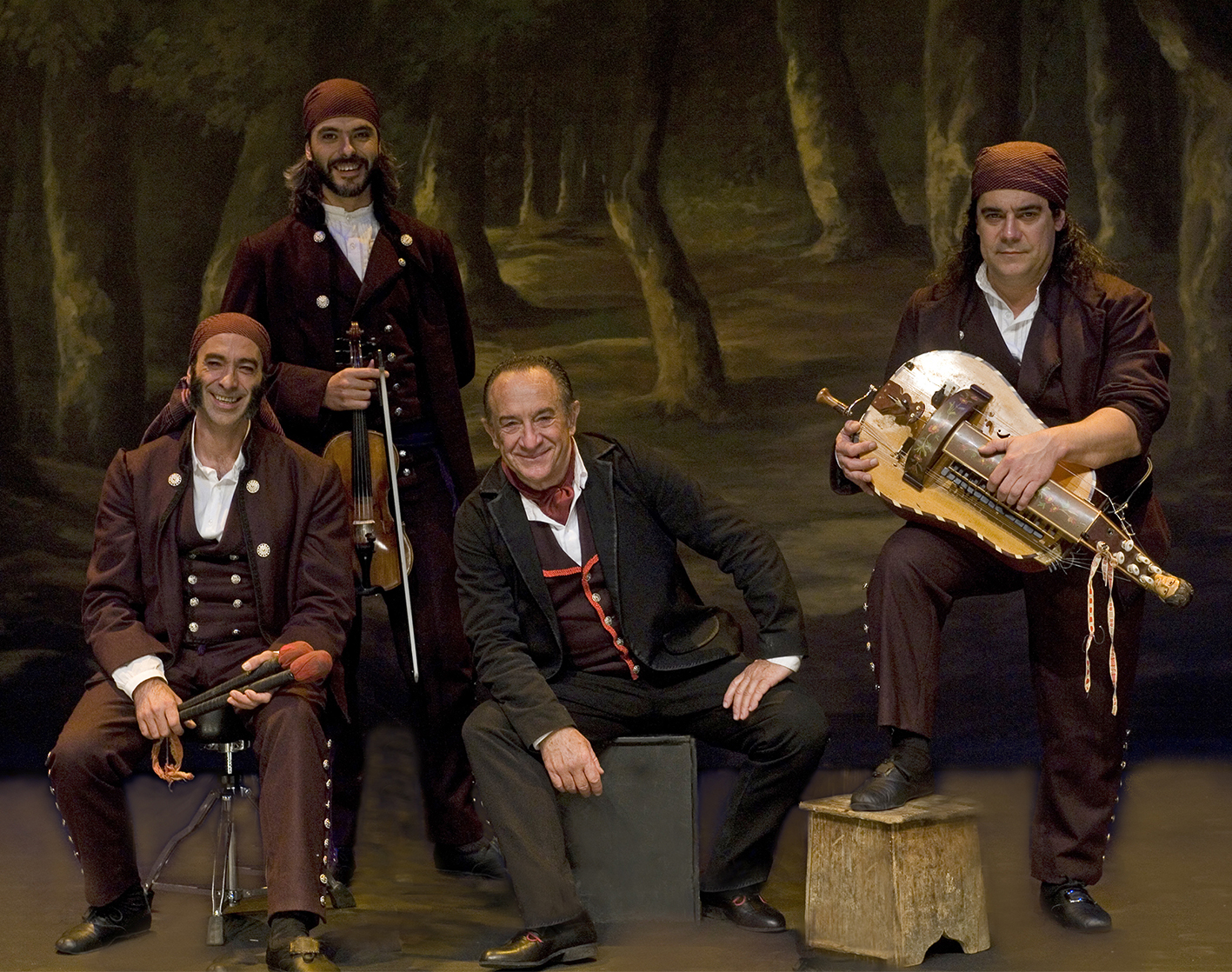
Our son Noé was growing up and he would end up being the first spectator of the next show.
I am talking about that marvellous tale from the Catalan oral tradition recovered by Joan Amades: Joan de l’Ós. Once again, the process of elaboration took us about three years, and I say “us” because together with Pitu Andreu, Xavier Macaya and Ricard Vallina, we started something very new for us at that time: to rescue from cellular and genetic memory, voice timbres, rhythms and melodies that did not obey a musical score but rather ways of being and feeling that had possibly already disappeared.
Thus was born the telluric rhapsody in the ancient way. Imagining that which we may have dreamt of one day but which we know no longer exists and in which we would arrive at a very hidden place where musicians and actors relive through their bodies the reincarnations of the characters. Channelling through which the telluric rhapsode transforms into angel or demon, into serpent or sweet water lily, into miser or kind character, that body, the rhapsode, knows the continuous state of representation of everything and everyone, knows that there is no greater seriousness in life than that of emptiness, because the mere fact of existing is already in itself a way of representing. The telluric rhapsode is capable of taking the bull by the horns and making you see that yours is also pure representation. Let’s see if it will happen like those female spectators of Kabuki theatre in Japan who attended their performances to learn from the Onagata (male actors who represent the essence of women) in order to learn the gestures and signs of femininity. Ay el arte! Many believe that art is the art of truth, but few know that art is the art of the lie that is truth.
The PRINCE as we have seen claimed the awareness of the telluric forces of the earth and their influence on culture. From this mainly
anthropological point of view the flow of inspiration in the itinerary of this sacred way of the scenic creation and consequently of the actor or rhapsode who will communicate it, organically we approach the roots of the culture of oral tradition. Thus, I felt attracted by the compilation made by Joan Amades visiting the most remote villages where the original sources of storytelling still survived,
and in this particular case of the tales and stories that were recited around the hearth fire.
One of these tales particularly caught my attention and that was the story of Joan de l’Os.
In it we find how a couple of children who have wandered into the woods away from the family home to collect firewood are surprised by a huge bear. The boy, full of fear,
runs away as fast as a flash. The girl, immobilised by fear, becomes easy prey for the savage animal. Far from attacking her, he protects her with his arms and with extreme care takes her to his cave on top of a nearby mountain.
Once there, he takes care of her and brings her food, but, of course, preventing her from leaving the cave, which he takes care of blocking it with a large rock. Days, months and years go by. The girl grows older and the story tells us how the womb of both entities will be pregnant with a future being. Thus, a very strong baby grows up inside the cave and participates in the mother’s intelligence and the father’s extraordinary strength. The new being grows and already in his puberty, the former child and now mother, aware of the herculean capacities of her son, begins to plot what will be the next
liberation of the two of them. The father bear, accustomed to often leaving the cave to procure the family’s food, removes the rock and puts it back in place, unaware of the possibility of what was already a foregone conclusion. Encouraged by his mother and finding the two of them alone, Joan, as the new creature was called, used his strength to dislodge the huge barrier or obstruction. They run away, hoping that in their flight they will soon be able to get into the undergrowth of the undergrowth of the forest.
The bear soon returned to his den and was surprised by the emptiness and absence he found when he arrived. Smell and instinct were not lacking to follow the trail. He soon caught up with them. Father and son were about to face each other in a fight to the death. Joan was determined, but in an exchange of glances in the middle of the confrontation, the bear could not help but be moved by the presence of his, deep down, beloved son This moment of doubt and hesitation in his determination was seized upon by Joan to pounce on him and effortlessly end his life. Once, with his father’s body lying at his feet and after his last breath, he began to skin his body and with that enormous skin to protect himself as a coat. They arrived with her mother in the village where she was welcomed by the neighbours who still remembered her from her childhood. Joan de l’Os did not have the same luck. Although he tried to integrate into the community, he was always seen as someone too strong not to be considered dangerous.
One day a great danger threatened the tranquillity of the village. It was a great giant. No one dared to deal with it except Joan de l’Os, to whom they turned for help. The outcome was swift. It didn’t take long for Joan to free the village from the menacing monster. A great feast was held with dances, dances and abundant delicacies to thank Joan for his feat.
At the end Joan surprised everyone by expressing his desire to leave the village and go into the deepest shadows of the forest.
He met fantastic characters as he wandered through his new life. Three of them followed his path with him. Like him, they had extraordinary physical abilities, such as the ability to uproot pine trees, move mountains or cause strong gales with their lung capacity. Joan de l’Os commanded this powerful group of unique beings. So it happened that, as the darkness was overcoming and the night was drawing in, they caught a glimpse of a faint light in the distance. Great curiosity provoked them to go cautiously towards this hidden abode. They reached the foot of the door and after knocking on it to announce their presence, they saw that there was no answer. Could it be uninhabited, they wondered. Then what was that little light doing on?
At that moment, a little man who had been watching them, warned them of the danger they were facing. This was the house of the King of Evil, before whom only by looking into his eyes would they breathe rottenness and corruption. The embattled Joan took this as a challenge, climbed onto a balcony and from there he was able to gain access to this mysterious place. He descended to the lower floor and, having ascertained that no one was in there, opened the door to his companions. What a pleasant surprise it was to discover a huge table laden with the most exquisite delicacies. There was nothing lacking to satisfy the most discerning palate. The wines flowed as if from a holy fountain. Joy and irrepressible exhilaration overcame them in absolute happiness.
Meanwhile Joan did not stop making fun of the little man’s warning. After a long break they decided to go to work in the forest, leaving one of their three burly companions on guard duty. “Today Arrancapinos will stay. When the food is ready, give us a loud whistle and let us know”
Once alone in the house, a strange atmosphere gave a presentiment of what actually happened. From the top of the chimney a hoarse voice announced his visit. A dismembered body fell in pieces. When all had fallen, the limbs came together to form the figure of the King of Evil. Good looking, handsome and with a sarcastic smile that hinted at all the evil he could do. “Welcome,” he said, “this is your home. Here you will enjoy all the sins and pleasures. Long live evil, long live evil, long live evil.” He then began to give Arrancapinos orders which Arrancapinos refused to carry out, earning him a tremendous beating.
Joan and his two other companions, alerted that he had not warned them, went to the house and found him on the floor without the strength to get up again. The next day the same fate befell Bufaplanetes, as well as Regiramuntanyes. Joan was the only one left to challenge the Devil. The Devil, confident of his superiority, also challenged Joan, but he came off badly. Half dead, Joan grabbed him by the ear and threw him into a well near the house.
The meal was ready and after the agreed notice the three of them showed up and were surprised by what he explained to them of how their encounter with
the demoniacal character had gone. They were eager to see him. “If you will,” he told them, “tied to a rope, you will go down to the bottom of the well, and there you will find him.” The three of them, one after the other, were afraid and asked to go up again, for it was so deep that they could never see the bottom. This time it was Joan who went down to the bottom of the well, saying to them, “No matter how much I ask you, never lift me up”. After a long descent instead of the king of evil, he found three witches dancing a possessed dance in a circle. When they saw him, they warned him of the danger, for he was in the devil’s abode Once again they engaged in a fierce fight, and once again the devil was victorious He said, “Ask me for anything you want”. Joan was thus able to free the three possessed women and leave the well. Outside, his terrified companions had abandoned him.
In a world where vices are virtues there was no place for Joan who continued on his way
through the forest.
A man too original and different from everyone else.
ARTISTIC DATA SHEET
Creation and direction Albert Vidal
Narrator Albert Vidal
Hurdy-gurdy and viola Xavier Macaya
Percussion Pitu Andreu
Tarota and violin Ricard Vallina
Sound design Denys Sanz
Light design Lluís Quintana
Video Rebecka Biró
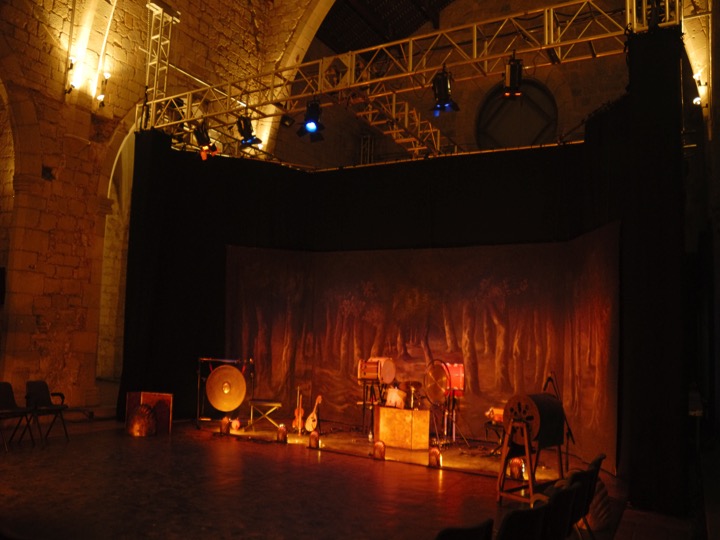
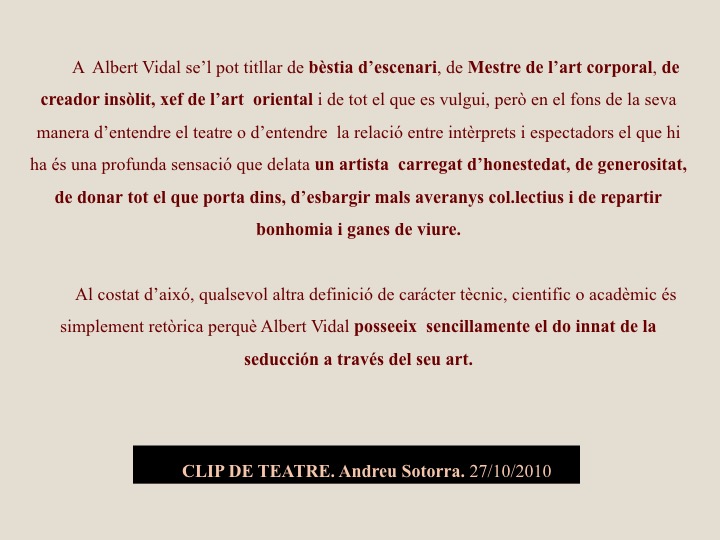
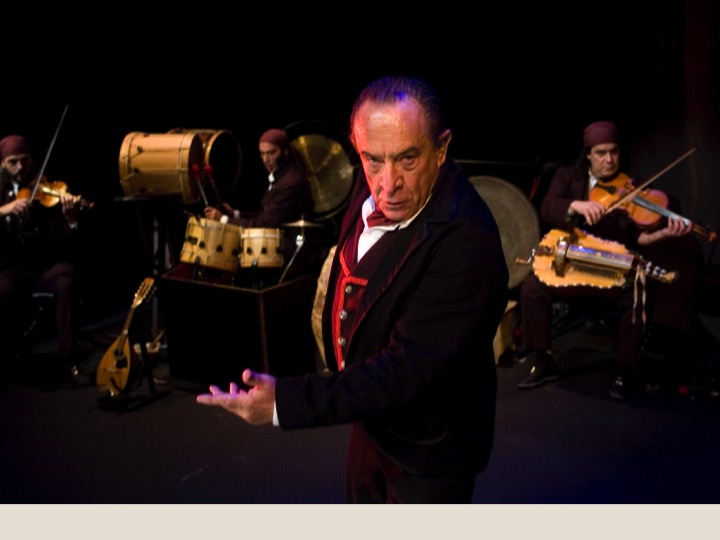
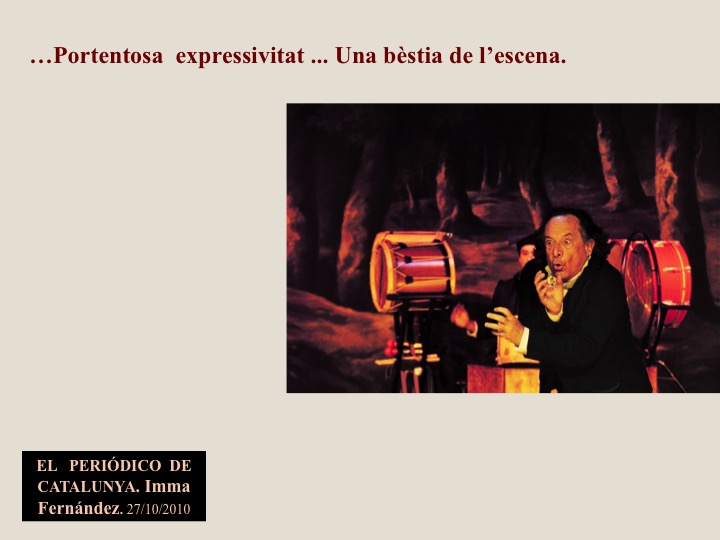
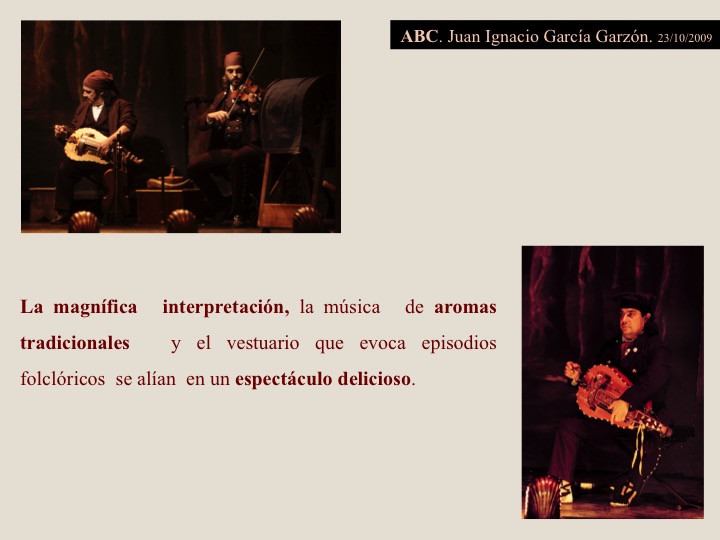
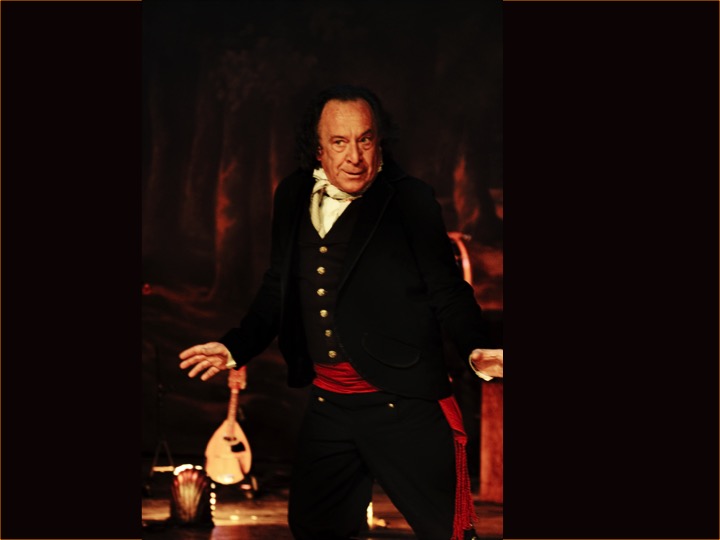
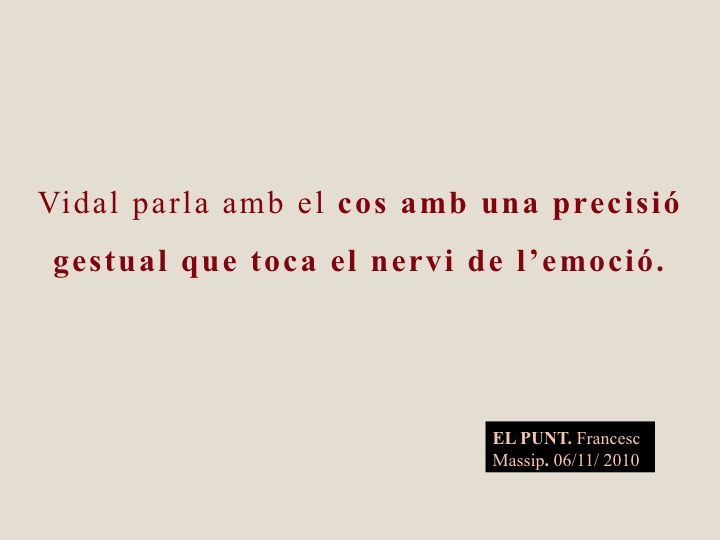
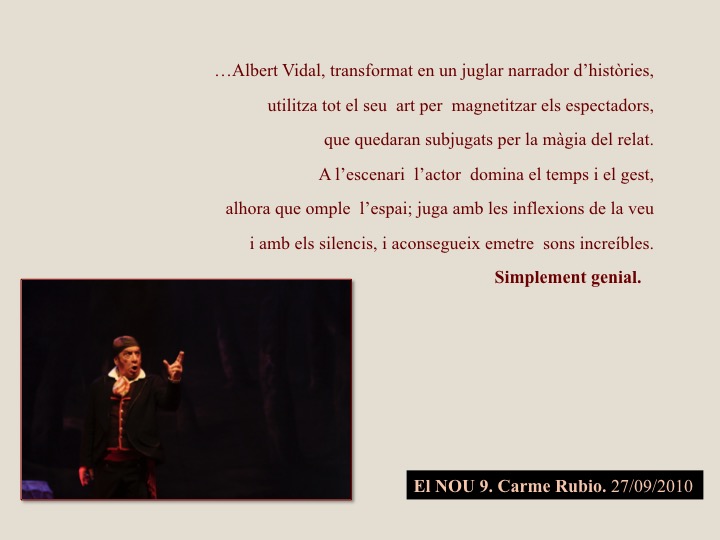
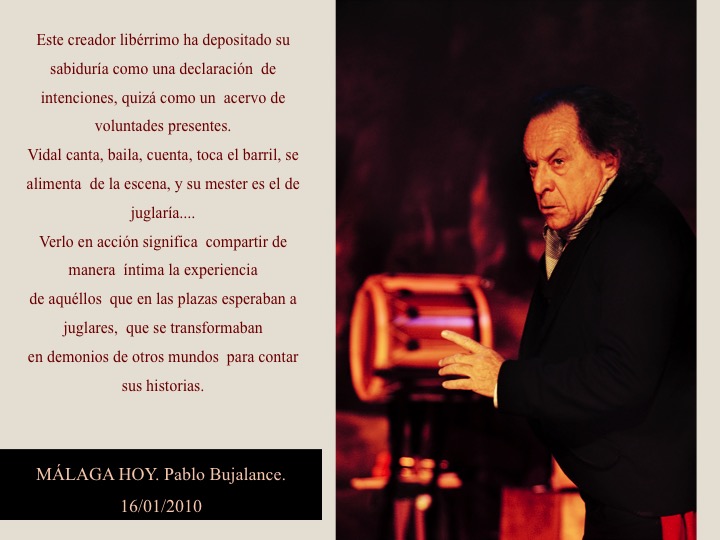
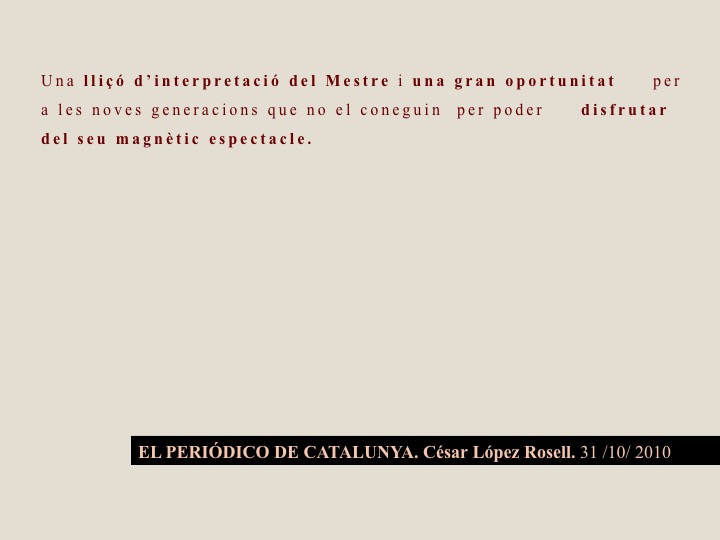
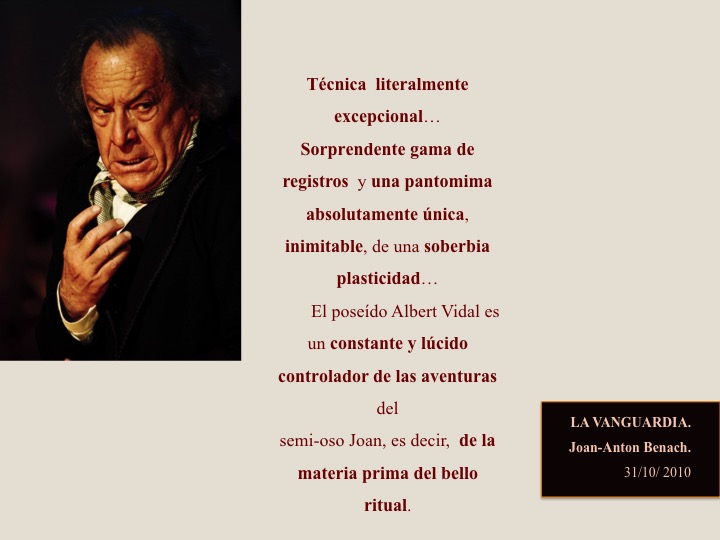
PRESS
